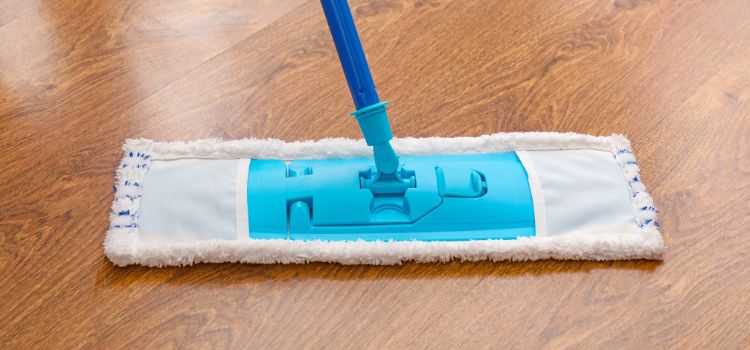As an Amazon Associate I earn from qualifying purchases.
Are you sick of washing floors for hours just to discover that there is still filth and grime present? Bid adieu to ineffective cleaning techniques and welcome to the realm of microfiber mop use! We’ll go over the specifics of how to use a microfiber mop efficiently in this article so you can easily have spotless floors. Learning the art of microfiber mopping can transform the way you clean, whether you’re an avid cleaner or just want to make things easier. Now let’s get started and learn how to use this cutting-edge cleaning gear to its fullest!

Introduction: Unleashing the Power of Microfiber Mop
Few innovations in the field of cleaning supplies have transformed our approach to maintaining a clean home like the microfiber mop. It is an essential tool in both residential and commercial cleaning environments because to its remarkable capacity to capture dust, debris, and filth. But in order to fully use a microfiber mop’s cleaning capabilities and realize its potential, one needs learn how to use one properly.
Understanding the Microfiber Advantage
The Science of Microfiber Ultra-fine synthetic fibers, usually consisting of polyester and polyamide, make up microfiber. Microfiber is unique because of its minuscule size, which enables it to efficiently collect particles much smaller than those that can be cleaned by conventional cleaning agents while fitting into even the smallest cracks. Its special construction improves its capacity to both lift and hold dirt, making it a vital instrument for comprehensive cleaning.
Benefits of Using Microfiber Mop
Superior Cleaning Performance: With little effort, microfiber mops are excellent at collecting dust, grime, and debris, leaving surfaces immaculately clean.
Versatility: Microfiber mops are an adaptable cleaning option since they work well on a variety of surfaces, including hardwood floors, tiles, and laminates.
Environmentally Friendly: Microfiber mops reduce waste and environmental effect since they are reusable and can be rinsed numerous times, in contrast to disposable cleaning pads.
Time and Cost-Efficient: In the long term, microfiber mops may save time and money due to their effectiveness in catching dirt and their simplicity of use.
Mastering the Art of Microfiber Mopping
Getting the Surface Ready The surface that has to be cleaned must be ready before using a microfiber mop. Clear away any furniture or big particles, as well as any other obstructions or dirt that can impede the cleaning process.
The Microfiber Pad’s Dampening Lightly moisten the microfiber pad with water or your preferred cleaning solution for best cleaning outcomes. Do not overwet the pad as this will reduce its efficiency and cause streaks on the surface.
Proper Technique
Start from the Farthest Point:To prevent treading on the recently cleaned area, start mopping at the furthest corner of the room and work your way toward the exit.
Use Figure-Eight Motion: When mopping, use a figure-eight motion to guarantee complete coverage and effective dirt removal.
Change Directions: Occasionally reverse the direction of your strokes to avoid accumulating dirt and get a deeper clean.
Focus on High-Traffic Areas: Since dirt and filth tend to gather in high-traffic areas like hallways and entryways, pay particular attention cleaning these places.
Maintenance and Care
In order to preserve the cleaning efficacy and extend the lifetime of your microfiber mop, adhere to following guidelines:
Regular Washing: Wash the microfiber pad in warm water with mild detergent after each use to remove accumulated dirt and debris.
Avoid Fabric Softeners: The efficacy of the microfiber fibers may be diminished by fabric softeners coating them. Select wash cycles that solely use detergent.
Air Dry: To stop mold and mildew from growing, let the microfiber pad air dry fully before reattaching it to the mop head.
Conclusion: Elevate Your Cleaning Routine with Microfiber Mops
To sum up, the microfiber mop is an example of technological advancement in the cleaning industry. Because of its remarkable cleaning abilities, adaptability, and environmental friendliness, it’s an indispensable tool for anybody looking for optimal cleanliness with less work. You may achieve spotless surfaces around your house or place of business and improve your cleaning routine by learning how to use a microfiber mop efficiently and using the right cleaning methods.
FAQs Microfiber Mop
The better cleaning efficiency of microfiber mops comes from their enhanced capacity to capture dirt and grime. Long-term, they are also economical, eco-friendly, and adaptable.
You can clean various surfaces like laminates, tiles, and hardwood floors with microfiber mops. Their adaptability makes them a sensible option for a range of cleaning requirements.
The best way to use a microfiber mop is to prepare the surface, dampen the pad, and utilize the right mopping methods, which include beginning at the farthest point, moving in a figure-eight motion, and concentrating on high-traffic areas.
To increase the longevity of your microfiber mop, wash the pad frequently in warm water with a light detergent; stay away from fabric softeners; and let the pad air dry well before putting it back on the mop head.
Yes, without a doubt! Microfiber mops offer immaculately clean floors with minimal effort, designed for efficiency and convenience. They are a useful tool for organizing your cleaning routine because of their excellent cleaning capabilities and simplicity of use.
As an Amazon Associate I earn from qualifying purchases.








